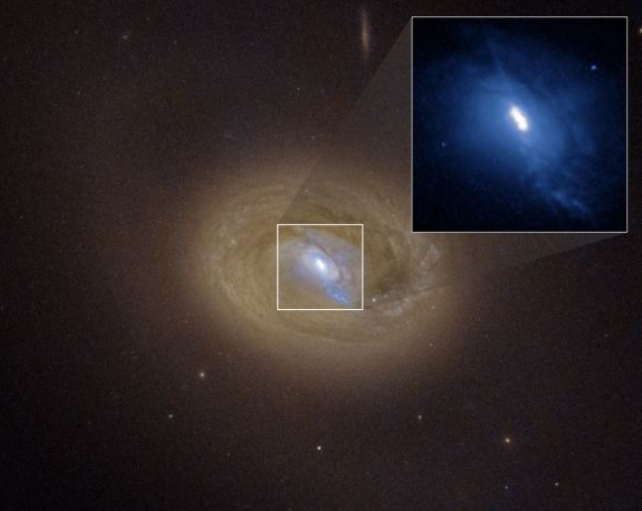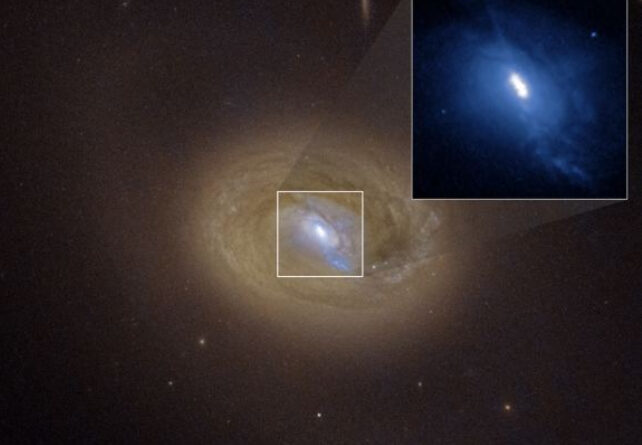Supermassive Black Holes in Nearby Galaxy Caught on the Brink of Collision
Galaxy Conflicts are foundational events in the Sector. They occur when two systems collide with stars in the cosmic dance.
They also make for amazing mergers of supermassive black holes. The result is another highly evolved galaxy with one supermassive black hole.
These massive events are a major influence on the evolution of galaxies. That’s how small constellations always come together to form larger ones. Such gatherings have been going on since the earliest times of the universe.
Galaxy meetings continue today. Our own Milky Way is still getting smaller and will collide with the Andromeda Galaxy in a few billion years. When that happens, the supermassive black holes of both stars can merge again.
We don’t see the whole process from start to finish because it takes millions of years to complete. However, that doesn’t stop astronomers from looking for – and finding – evidence of galaxies and supermassive black hole collisions.
Recent discoveries have used the Hubble Space Telescope (HST) to spot three bright, visible ‘hotspots’ in colliding galaxies. These targets are relatively close to us – only about 800 million light years away.
Astronomers followed Chandra observations and radio data from the Karl G. Jansky Very Large Array.
Normally, galaxies with bright cores, called active galactic nuclei (AGN for short), are very far away. They are often seen earlier in cosmic time. The opportunity to study galaxies and supermassive black holes during the collision of the nearby ‘modern’ Universe is a good time to study the architecture of such an event.
Spotting Incompetent Supermassive Black Hole Collisions
The discovery of a future cosmic collision came when HST’s Advanced Camera for Surveys spotted three optical diffraction bands at the heart of a colliding galaxy called MCG-03-34-64.
Two of those hotspots appear to be very close – separated by only 300 light years. They follow the presence of oxygen gas in the spine. It’s still being lit by a very powerful object and the hot spots have surprised astronomers. (The third hot spot is not well understood.)
“We didn’t expect to see something like this,” said Anna Trindade Falcão of the Center for Astrophysics | Harvard & Smithsonian in Cambridge, Massachusetts. “This sight is unusual in the nearby Universe, and it tells us that something else is going on in the galaxy.”

Falcão and his colleagues wanted to know what happens to cause those bright spots. So, they used the Chandra X-ray observatory to focus on the action.
“When we looked at MCG-03-34-64 in the X-ray cluster, we saw two separate, intense sources of high-energy emission consistent with the bright optical features of light seen with Hubble . We put these pieces together and concluded that we were probably looking at two supermassive black holes,” Falcão said.
The team also found observations of these objects in the radio telescope database. The strong radio emission proved that the two holes exist and are moving closer together.
Falcão noted: “When you see bright light with optical radiation, X-rays and radio waves, many things can be ruled out, and it can be said that these are black holes “When you put all the pieces together it gives you a second picture of the AGN.”
Next Month
These supermassive black holes will collide in perhaps a hundred million years.
Each is at the core of the same constellation. As those galaxies get closer together, the black holes at their hearts will begin to interact. Eventually, they will collide in an energetic event, producing gravitational waves as part of the process.
Astronomers suggest (through simulations and observations) that the merger of galaxies with supermassive black holes creates more activity. As the collision continues, interstellar gas flows into interstellar regions.
It is also compressed in other areas and both of these actions cause the star to explode. Some of the gas also enters the supermassive black hole, causing the emission to increase as the material accumulates in the accretion disk.
These encounters occur frequently in the Universe. Models of stellar evolution, as well as observational evidence, suggest that AGNs in the hearts of galaxies are merging. The collision of supermassive black hole pairs in those AGNs also suggests that the black holes are moving away from each other.
Supermassive Black Hole Collisions and Future Investigations
Understanding the merger of nearby AGNs like the one seen in MCG MCG-03-34-64 provides a unique window into the final stages of what astronomers call SMBH binary coalescence.
Such events continue to be a major way to measure the results of this merger. They will provide a rich field of study using universal light-sensing observatories, as well as future magnetic field instruments.

Those findings will require advanced versions of the Laser Interferometer Gravitational-Wave Observatory (LIGO), which led to its discovery a few years ago. The magnetic resonance of the large black holes will be the target of future instruments such as LISA (short for Laser Interferometer Space Antenna).
It will use three detectors located millions of kilometers apart to catch the long-period gravitational waves produced when black hole behemoths like the one in MCG-03-34-64 crash.
Since that merger is happening throughout the Universe, it will be a rich study that will greatly help our understanding of the merging of galaxies as part of the evolution of the universe.
This article was published by Universe Today. Read the first article.
#Supermassive #Black #Holes #Nearby #Galaxy #Caught #Brink #Collision
